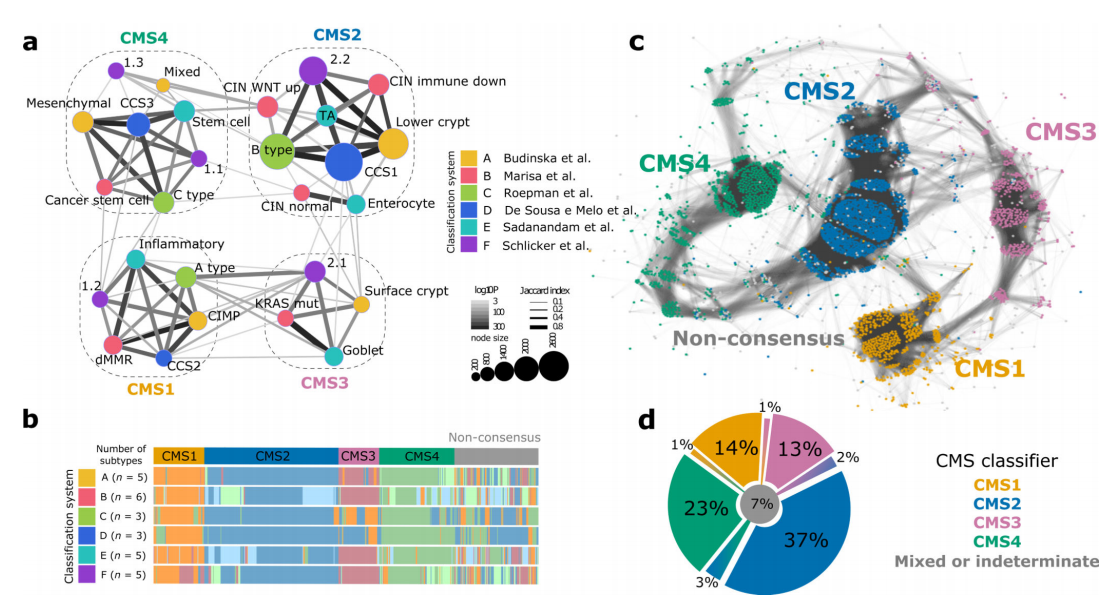May 1331, 13038

Authors
Guinney J†, Dienstmann R†, Wang X†, de Reyniès A†, Schlicker A†, Soneson C†, Marisa L†, Roepman P†, Nyamundanda G†, Angelino P, Bot BM, Morris JS, Simon IM, Gerster S, Fessler E, De Sousa E Melo F, Missiaglia E, Ramay H, Barras D, Homicsko K, Maru D, Manyam GC, Broom B, Boige V, Perez-Villamil B, Laderas T, Salazar R, Gray JW, Hanahan D, Tabernero J, Bernards R, Friend SH, Laurent-Puig P, Medema JP, Sadanandam A, Wessels L, Delorenzi M, Kopetz S, Vermeulen L & Sabine Tejpar
Nature Medicine 2015, doi:10.1038/nm.3967
Abstract
Colorectal cancer (CRC) is a frequently lethal disease with heterogeneous outcomes and drug responses. To resolve inconsistencies among the reported gene expression–based CRC classifications and facilitate clinical translation, we formed an international consortium dedicated to large-scale data sharing and analytics across expert groups.
We show marked interconnectivity between six independent classification systems coalescing into four consensus molecular subtypes (CMS) with distinguishing features: CMS1 (MSI Immune, 14%), hypermutated, microsatellite unstable, strong immune activation; CMS2 (Canonical, 37%), epithelial, chromosomally unstable, marked WNT and MYC signaling activation; CMS3 (Metabolic, 13%), epithelial, evident metabolic dysregulation; and CMS4 (Mesenchymal, 23%), prominent transforming growth factor β activation, stromal invasion, and angiogenesis. Samples with mixed features (13%) possibly represent a transition phenotype or intra-tumoral heterogeneity.
We consider the CMS groups the most robust classification system currently available for CRC – with clear biological interpretability – and the basis for future clinical stratification and subtype–based targeted interventions.

